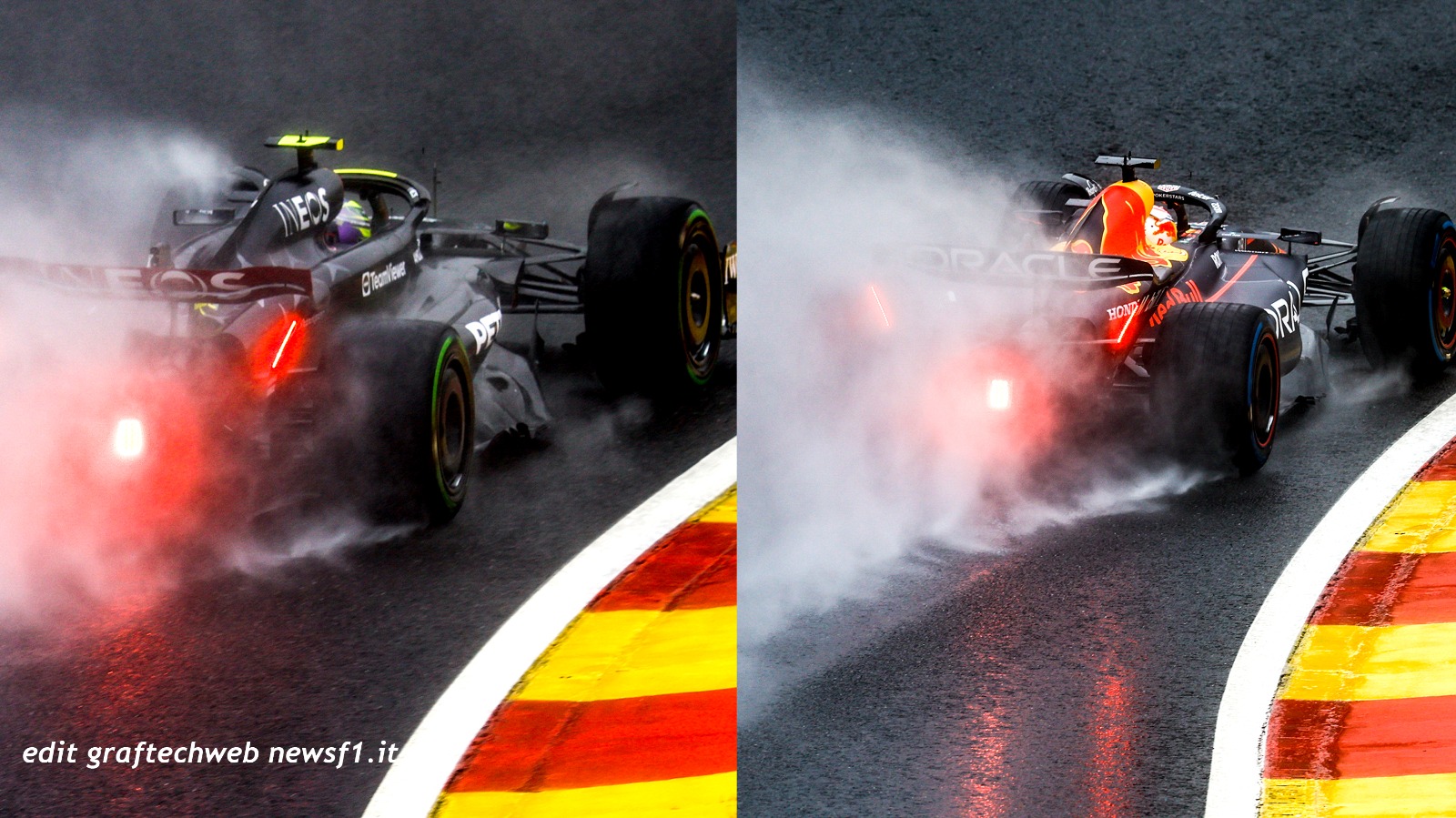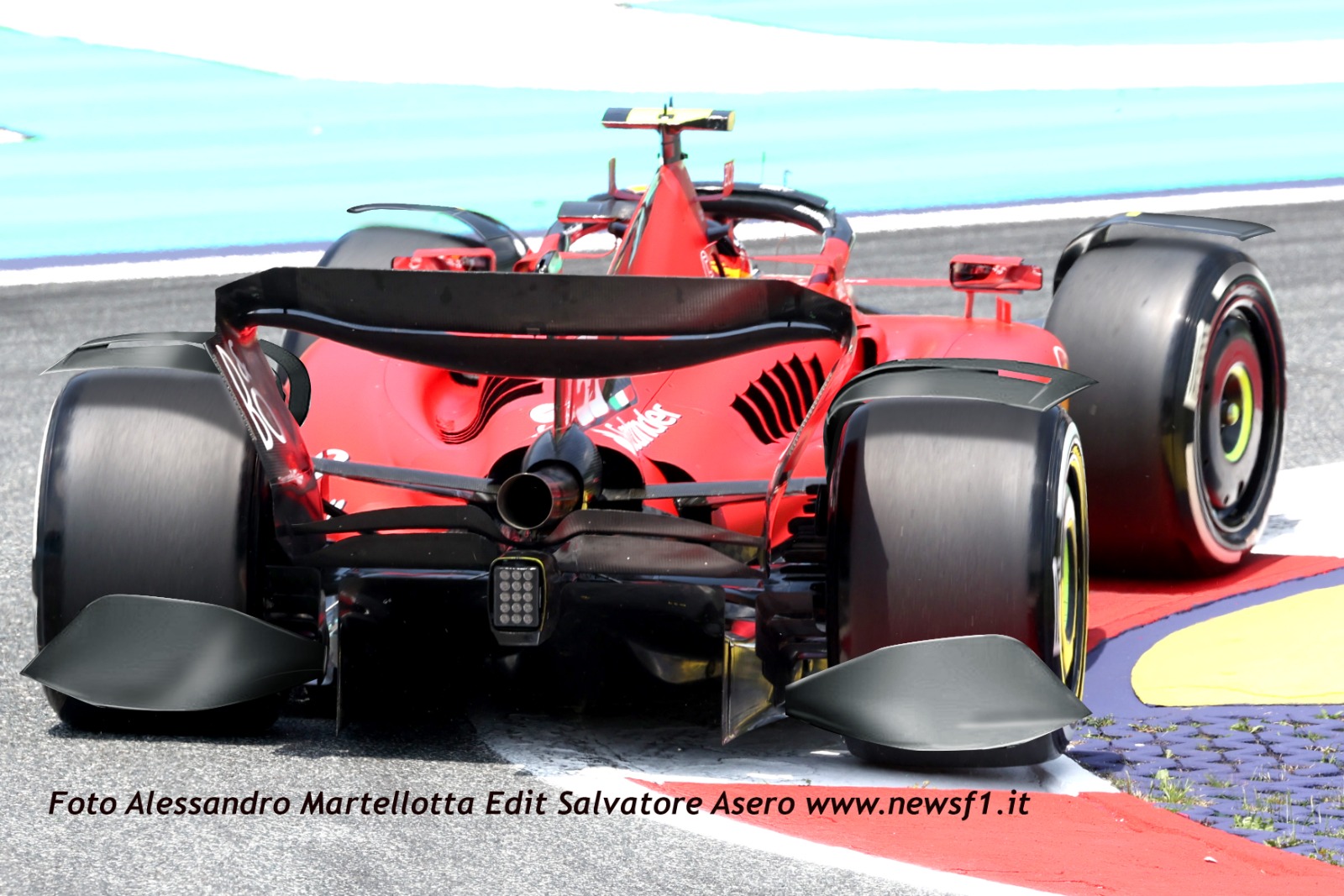mwillems wrote: ↑14 Aug 2023, 17:19
Just_a_fan wrote: ↑14 Aug 2023, 17:05
mwillems wrote: ↑14 Aug 2023, 14:21
With regards to the diffuser, I'd be highly surprised if they weren't picking up water from the surface and spitting it out.
I'd be amazed if the cars were lifting water off the track with the under floor aero at all - there will be some localised condensing out of moisture from the air (we see that under the front wing on various shots, for example) but the water on the track is staying there until the tyres get involved. The tyres are lifting the water (it's their job to do that, after all) and the aero is then throwing that up in the air - the aero was designed specifically to lift the car's wake high above the track so that it doesn't affect the following car. It's doing that and pulling the spray from the tyres up with it.
But the spray comes down again in a mist and is still a problem, and not all would be lifted over, you'd think?
We will find out later this year but even the FIA are saying they need to analyse how much is being pushed out by the diffuser.
How do you think the extreme pressures of the floor doesn't apply to the water in that low pressure zone? I just imagined so.e of it would expand to finer particles and become part of the flow.
Yes, the "fog" is created by the water being lifted and then hanging in the air.
And the floor doesn't experience "extreme pressures". Certainly not large enough pressure drops to cause water to be sucked from the surface of the tarmac. Yes, pressure drops will allow water to condense out of the moist air, but we're not vacuuming the water off the ground. Most of the water involved is from the tyres doing their job as we know, the tyres disperse 85L / s at 300km/h (yes, no one is likely going that fast in heavy rain but it's the figure oft quoted). That's each tyre. So the cars could be throwing over 300L/s in to the air.
At 300kph, a single intermediate tyre can disperse around 35 to 40 litres of water per second. That means that a Formula 1 car at full speed on the straight can shift around 150 litres of water per second running on the intermediate. If it's on the full wet, that figure can be doubled. An astonishing amount of water.
https://www.pirelli.com/global/en-ww/ra ... a-1-52943/
Obviously they don't generally run in water that deep and certainly not at 300km/h. But the fact remains that each car is throwing 10s of litres of water upwards per second from the tyres.
Here's a nice example of what's happening - Max driving through some standing water - one can see the huge amount of spray the rear tyre is generating as water is thrown sideways and upwards by it. The front tyre has done likewise and the spray from that is over the rear tyre and being dragged in to the cloud too. The water from the rear is then picked up by the wake to add to that cloud. And that big cloud is from a bit of standing water not much wider than the length of the car. Make it the full track and add 19 other cars and you have the problem facing F1.

Frankly, I can see F1 moving towards not running if there is more than a very light amount of rain. Any solution is unlikely to be that effective unless it encloses the tyre and directs the water back on to the tarmac and/or laterally in a stream (not small droplets).
If you are more fortunate than others, build a larger table not a taller fence.





